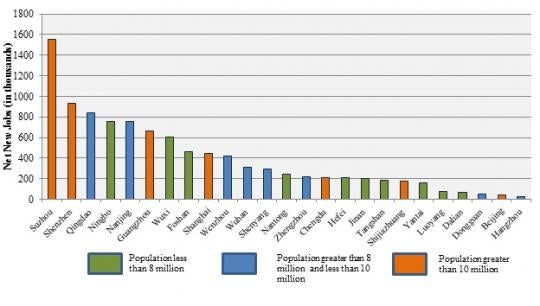About seven million college graduates are expected to flood the Chinese labor market this year. Seven . . . million . . . hopeful . . . graduates – all looking for work!
The Chinese central government, in response, has been actively pursuing policies that expand employment by supporting the growth of small and medium-size firms, as well as by promoting entrepreneurship among young graduates.
But have these policies been effective? How is China tackling the global challenge of job creation? And are there lessons other countries around the world can learn from China?
Enacting effective policies that promote jobs can be challenging for any economy, let alone one as massive as China. A clear understanding of the business environment and the performance of firms is needed – a way to sense the pulse of the private sector if you will.
A recent survey of formal Chinese firms by the World Bank Group’s Enterprise Survey Analysis team provides a good starting point to discuss this issue.
The 2012 Enterprise Surveys in China covers 25 of the largest metropolitan areas in China (see Figure 1). To pull this wealth of data together, a total of 2,848 interviews were completed – with 2,700 interviews conducted with professionals from the private sector and a special sample of 148 state-owned establishments
What the survey reflects on job creation is illuminating. From 2009 to 2011, private-sector firms in all 25 cities surveyed in China experienced a net increase in the number of full-time permanent employees. Nearly 10 million new jobs were created in these cities. Cities with the largest increase in that type of worker were predominantly located in southern China, where the manufacturing sector has been increasing and the population is younger.
Net Job Creation by Metropolitan Areas
The figure above indicates the net new manufacturing and service jobs created between 2009 and 2011 by city, in order from the highest (Suzhou) to the lowest (Hangzhou). It is important to note that, due to the fact that only manufacturing and service firms were surveyed, cities that have a greater presence in other sectors – such as agriculture, forestry, mining, or state-owned enterprises – may have understated the number of jobs added. However, what is interesting about the figure is that there is not necessarily a direct relationship between the size of the cities and the net number of jobs created.
Additionally, employment growth rates are remarkably similar across firms of different size with small (5-19 employees), medium (20-99 employees) and large firms (over 100 employees) all growing their workforce at about 9 percent annually. At least at first glance, this finding appears to support the results of Haltiwanger who finds that there is no systematic relationship between firm size and employment growth rates.
There is not necessarily an unequivocal policy implication from that finding. One can easily justify supporting cities with already high levels of job creation, and just as well argue for promoting job creation in cities lagging behind. Much of this will depend on the details and nuances of the regions at play. The waves of new graduates looking for jobs in China each year will certainly be hopeful that this kind of employment growth will continue, and that it will be sufficient to absorb their ranks
Regardless, we strongly believe that to solve one problem and give hopeful graduates a future to look forward to we – government, academia, the private sector and other stakeholders – all need to look at the data and understand what firms actually experience, in order to ensure that their experience is reflected in the policies that affect everyone.
The data show that China enjoyed robust employment growth between 2009 and 2011 even while the world was experiencing significant economic shocks. Identifying what lessons may be garnered from this will be an important step.




Join the Conversation